A few weeks ago I heard on the radio that the annual Elmira Maple Syrup Festival (yes, an entire festival dedicated to that sweet delicious goo made from tree sap) was coming up and I got to thinking…
Years ago, when I was a wee lad living on a farm, we tried making our own maple syrup. Not knowing what we were doing, we headed down to the Co-Op for some supplies, tapped some trees, collected the sap, and boiled it down to syrup. How hard could it be? Well, had we the foresight to boil the sap outside and not in our kitchen, things would have been much easier (after all, at a ratio of 40:1, that’s a lot of sticky steam all over the kitchen). But worse was the fact that in late March, when there are no leaves on the trees, none of us suspected that two of the seven +80-year-old trees, all in a row, weren’t even Maples. So in the end, we ended up with a very sticky kitchen and some sweet, but strange tasting, cloudy, syrup that no one really wanted to eat.
Armed with the knowledge of past mistakes and a desire to succeed where once we had failed, I set out on my own Maple Syrup Festival!
First things first, are these trees Maples?!? Turns out, there are approximately 129 species of Maples, but only a few are used in the making of Maple syrup, the main variety being the Sugar Maple (for obvious reasons). Turns out, my Maples are Norway Maples, often planted in big cities due to their quick growth and resilience when faced with pollution, road-salt, and lots of asphalt…not for their quality sap. Many web-sites don’t list Norway Maples as being suitable for syrup production, and some even say that they are to be avoided. However, the information I found was inconclusive at best. What I did determine was that, at the very least, it wasn’t poisonous. So why not give it a try?
What you’ll need are some spiles (the spout where sap comes out) and sap buckets, a drill and bit to set the spiles, and a large boiling pot. The holes don’t need to be deep and they should be around 3 feet off the ground, and for the sake of your tree, no more than two taps per tree (three for trees larger than 27″ in diameter). Trees are mature enough for tapping at 40 years old. I tapped one tree and collected a small amount of sap, about a cup, to boil down and test for taste. To my surprise, it tasted wonderful!
I had five spiles and buckets and have four Maples, so it worked out fine. I tapped my trees and waited. Not much happened the first afternoon. Things were pretty dry. Did I do something wrong? Nope! The next morning, drip, drip, drip, and by the afternoon the buckets were half-full! By the same time the day after, but buckets were full and I had to start boiling.
Boiling sap isn’t fun. It’s just slightly more exciting than boiling water…in that eventually you know it will turn into syrup. But it takes a long long time. Learning from my childhood, I used the side-burner on my BBQ to do the boiling outside.
Finally at around 11:30 pm I had to turn everything off and cover the pot so I could go to bed. My pot was at about the half way mark. Oi. Next morning I turned the burner on again. Much later that afternoon, the sap had boiled down to a more reasonable amount, so I transferred it out of my massive 40qt restaurant stock pot to a normal-sized soup pot. At this point I also started filtering the sap, as it had turned cloudy during boiling. I just used some clean cotton jersey material, a mesh strainer, and a small sauce pot as a ladle, straining directly back into the soup pot. At this point the sap is very sweet and light amber or honey coloured, but still has the consistency of water, so it strains easily as long as you change your filter often.
What you’ll collect in your filter are what’s known as sugar sand; a harmless precipitate from boiling the sugars in the sap. You can choose to leave them if you like as they’re in no way harmful. If I were doing larger quantities, I would build a vacuum filter system, but it’s really unnecessary at these amounts.
After a while in the smaller pot, when there’s nearly nothing left, you’ll notice that the sap starts to bubble more and a light foam will develop. At this point you *really* need to watch things carefully as you can go from sap, to syrup, to candy, to burnt, in no time! There are several ways to determine if your syrup is ready to remove from the heat. One is by temperature based on the boiling point of water at your altitude, plus 7 degrees Fahrenheit. The other is by look. I use the second method. Since you have to be right there near the end point anyway, you can easily see if the syrup is done without having to measure the temperature (or take a sample, cool it and test its thickness). You know when your syrup is done when it really starts frothing up. When your pot is full of bubbles and you’re afraid that if you leave it any longer it might boil over, you’re done.
At this point, transfer your sap into a sterile jar, cover, and let cool. If you use a glass jar, make sure your syrup is cool before you put it in the fridge so to avoid any potential glass breakage due to temperature shock.
The next day you’ll probably find some sediment at the bottom of your jar. These are the same sugar sands that you filtered out before. You can either leave it there or filter it out. If you filter it out, just heat the syrup so it runs more easily, but don’t boil it (as that will produce more sand). You can also leave the syrup to settle out for a few days and decant into another sterile jar.
Then, rinse and repeat. That is, now that it’s been 48 hours since you last collected your sap, your buckets are probably full again and you need to start the process all over again! I did this process 3.5 times before the sap stopped flowing. Total yield, about 2 litres of syrup! Not particularly cost effective, but fun, and not many people can say they have ultra-local Maple Syrup.
Now to talk about taste. First of all, let me start off by saying that my syrup tastes fantastic. That said, because it’s from a Norway Maple and not a Sugar Maple, it does have a slightly different taste to it. Not a bad taste, but a different taste. It’s much like the different tastes between different varieties of apples; they all taste like apples, but there’s still a difference between them. I quite like the taste. It’s a more subtle flavour, but with a slightly woody note. Almost more rustic somehow, but not smokey, musty, or grassy in any way.
Bon Appetite,
Mr. Carnegie, Scavenger Gourmet

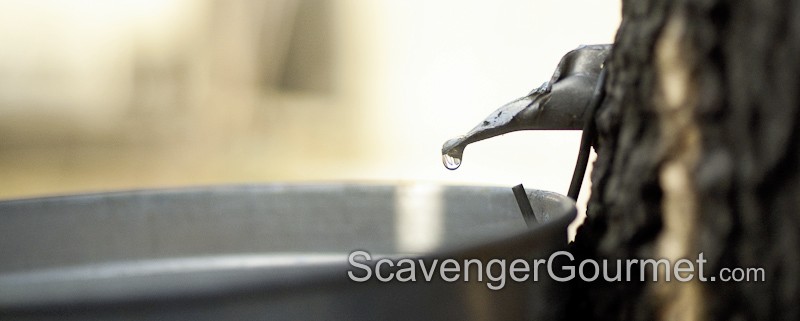
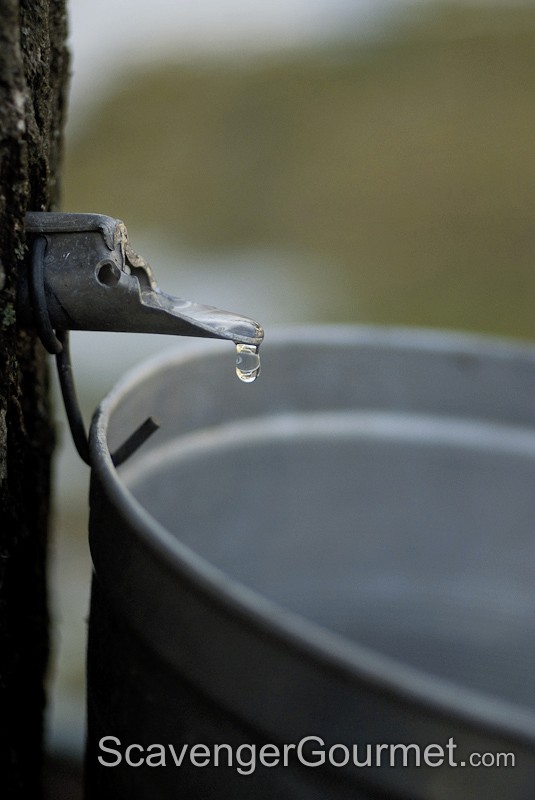
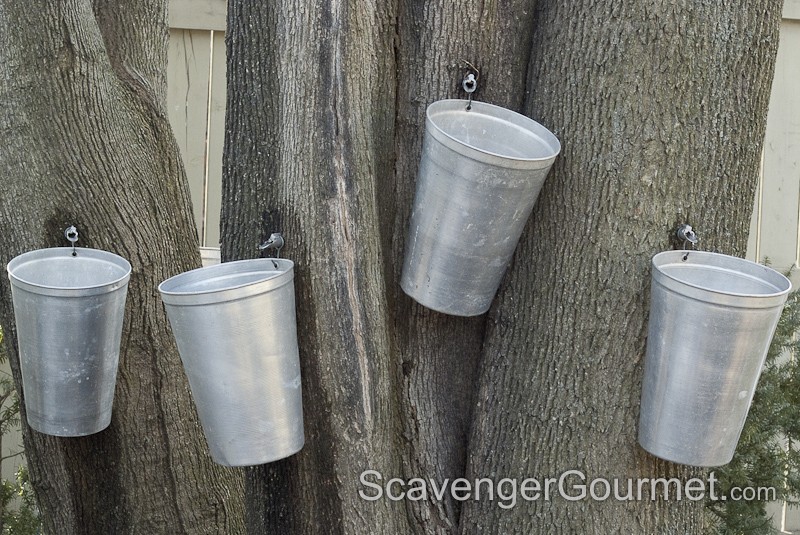
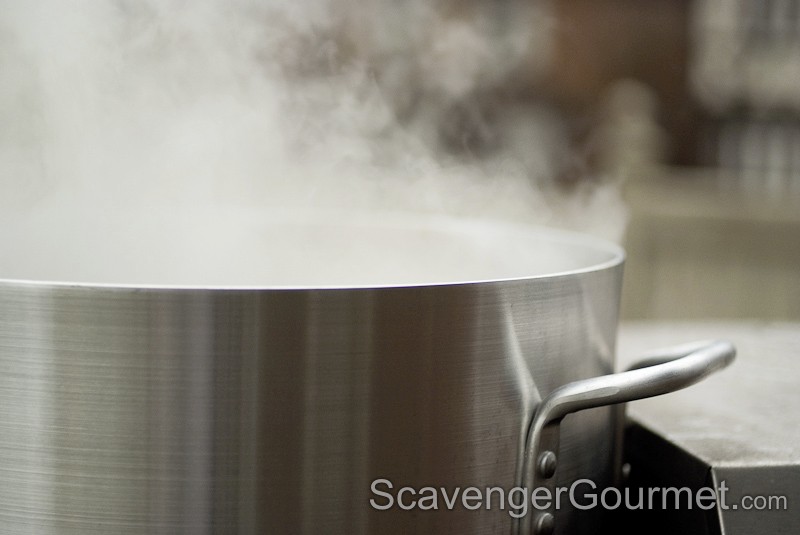
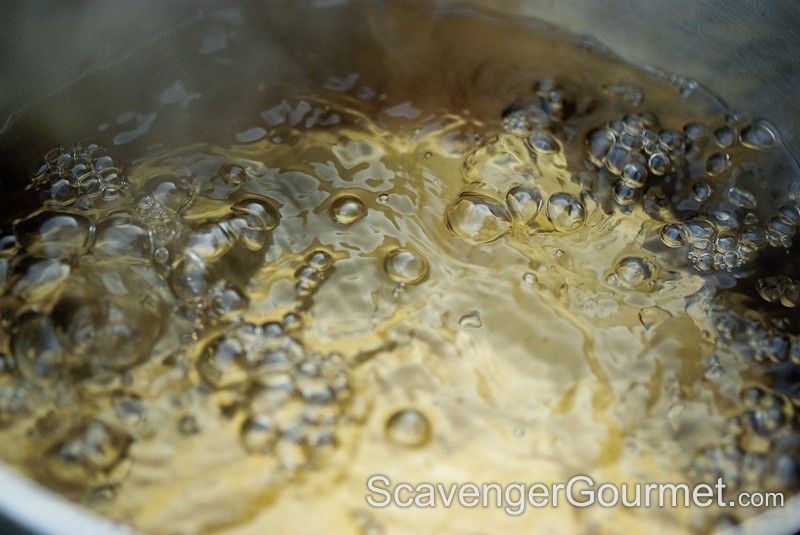
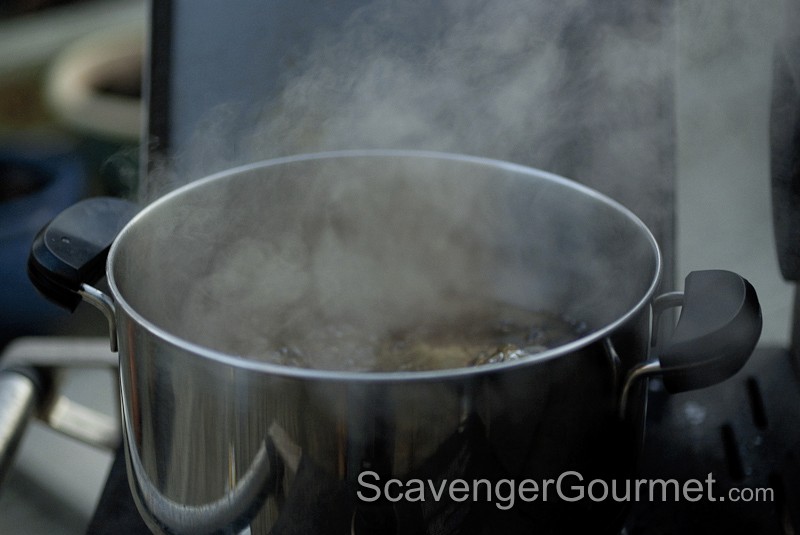
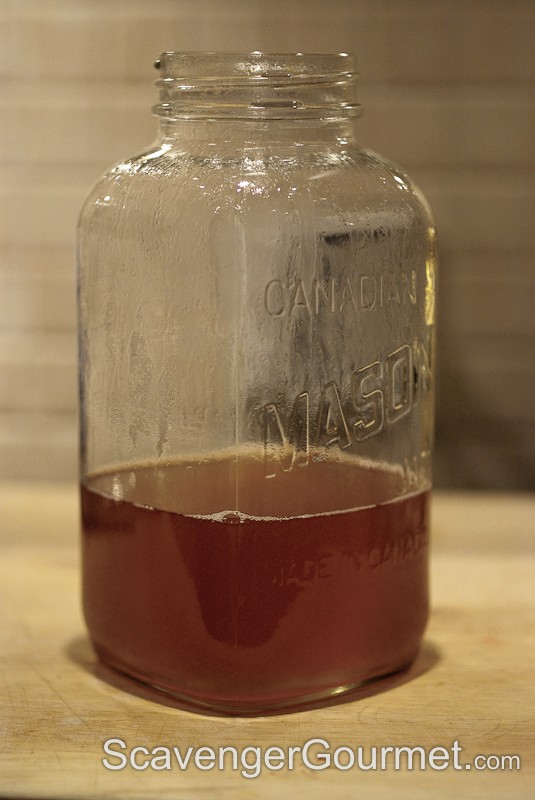
You make some ad hominem arguments.